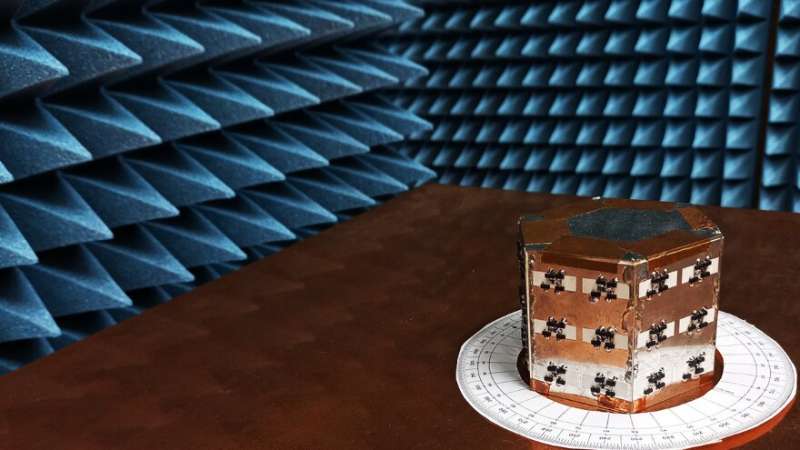Towards a new antenna paradigm with waveform-selective metasurfaces

When you tap on your phone screen to check something on the internet, you make use of wireless communications technology. With the advent of 5G networks, this technology has made our lives easier than we could imagine. As we progress towards 6G communication, the use of Internet of Things (IoT) devices to monitor and perform tasks is becoming inevitable. As a result, there is a growing demand for the services provided by such devices.
However, the frequency resources accessible to the IoT devices remain limited. Consequently, there has been a lot of research focused on using various modulation schemes to fit in more data without causing interference. Yet, however, they have ignored one important aspect of wireless communication: conventional antennas respond to signals at the same frequency in the same manner.
However, if one were to modulate the antenna performance for a fixed frequency based on other aspects of the signal waveform, like its pulse width, it would add a whole new degree of freedom that can be exploited to transfer data efficiently.
Fortunately, this is exactly what a team of researchers led by Dr. Hiroki Wakatsuchi from Nagoya Institute of Technology (NITech), Japan have accomplished. In their paper published in Nature Communications, the researchers put forth a new system that uses “metasurfaces” to create waveform-based selectivity in antennas.
“Classic antennas are incapable of varying their performance, for example, its radiation pattern, at a fixed frequency. In our study, we introduced a new degree of freedom to change antenna performance and control electromagnetic waves/signals even at the same frequency by using ‘metasurfaces,’ artificially engineered electromagnetic structures that can produce electromagnetic properties based on the signal received. In particular, our metasurfaces show unique behavior that selectively transmits incoming signals in response to their pulse width, which is applied to the antenna design,” explains Dr. Wakatsuchi. The study involved contributions from Dr. Ashif Amunulloh Fathnan from NITech, Dr. Christos Christopoulos from The University of Nottingham, UK, and Dr. Filiberto Bilotti of the ROMA TRE University, Italy.
Put simply, metasurfaces are artificially generated surfaces that can augment electromagnetic waves based on their properties. Accordingly, the researchers used non-linear metasurfaces to change the response properties of the antenna for waves of the same frequency but with different waveforms.
By performing both experiments and numerical simulations, the researchers demonstrated that their antenna design was fully capable of selectively receiving/transmitting both surface and free-space waves. They also proposed several applications for their design, including the steering of a main beam, receiving signals under simultaneous incidence, and building a mutual communication system without needing a frequency change or an external power supply.
“With our technology advancing towards 6G and 7G networks, cyber spaces and physical spaces are becoming more closely associated. Using multiple IoT devices, we would be able to create a digital twin for each physical space. Such a concept of cyber-physical space will require a substantial number of IoT sensors to be deployed in physical spaces to collect information without severe electromagnetic interference occurring between these devices to ensure real-time time update,” comments Dr. Wakatsuchi.
“Our study contributes to this future by providing a way to harmonize wireless communications while increasing the number of communication devices at the same frequency.”
More information:
Daiju Ushikoshi et al, Pulse-driven self-reconfigurable meta-antennas, Nature Communications (2023). DOI: 10.1038/s41467-023-36342-1
Citation:
Towards a new antenna paradigm with waveform-selective metasurfaces (2023, February 28)
retrieved 28 February 2023
from https://techxplore.com/news/2023-02-antenna-paradigm-waveform-selective-metasurfaces.html
This document is subject to copyright. Apart from any fair dealing for the purpose of private study or research, no
part may be reproduced without the written permission. The content is provided for information purposes only.
For all the latest Technology News Click Here
For the latest news and updates, follow us on Google News.
